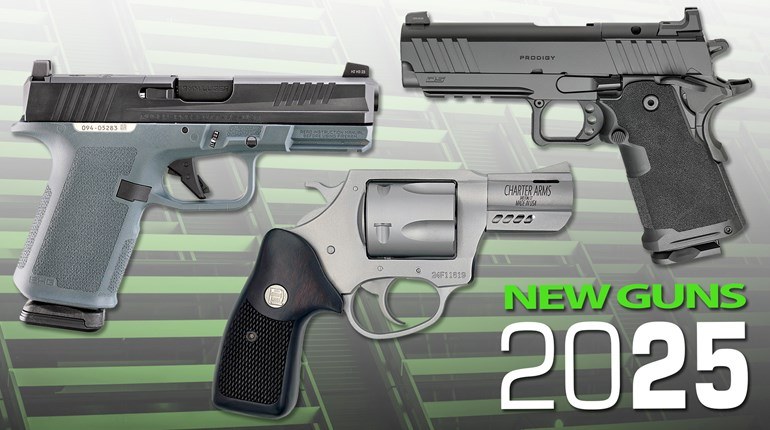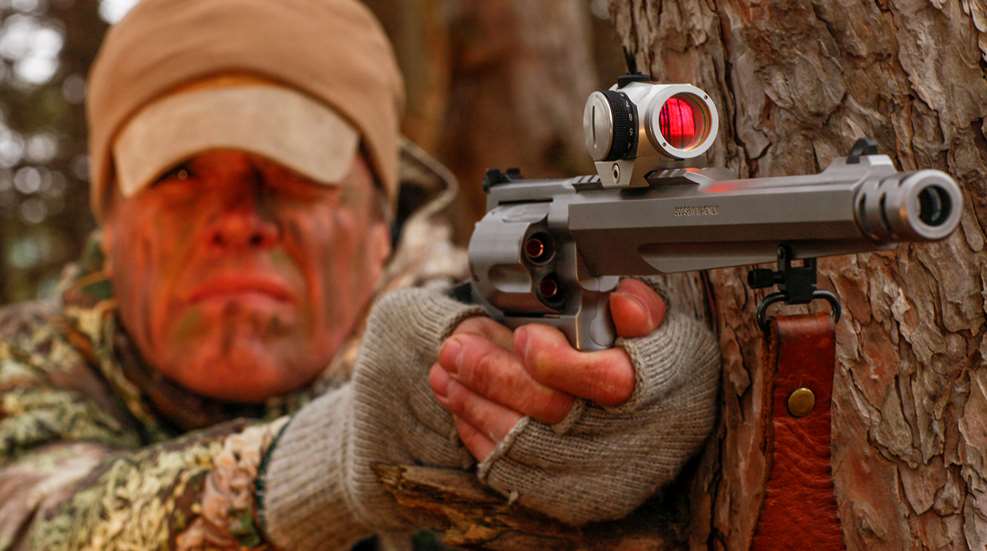
It’s been said that youth is wasted on the young. While this can be applied to virtually any endeavor you choose, in the realm of hunting, no truer words have been spoken. My eyes agree wholeheartedly, but it wasn’t always like this. The sad reality is that once you hit the 40-year mark or thereabouts, your up-close vision starts heading south (or is that north?). No one ever said getting old is easy.
While I have been near-sighted since high school, requiring corrective lenses, more than a decade ago, I made the decision to have corrective surgery since by this point the technology had been sussed out and standardized, and most importantly, the procedures were routine and safe. While the laser was passing from one eye to the next, it was mystifying how rapidly the condition was eliminated. Instant clarity. Wow. However, just as quickly, I lost my up-close and personal vision, requiring an abrupt reliance upon reading glasses for, well, reading—and collaterally, shooting open iron sights. What’s going on here? I just essentially traded my regular glasses for a pair of reading glasses. The whole point of the surgery was to eliminate the reliance upon corrective lenses, and now I was back to square one, with a significantly lighter wallet. While not quite as critical with open sights on a rifle, on a handgun, the short sight radius plays hell on a reading-glasses reliance. While my situation wasn’t really unique, it was shockingly immediate.
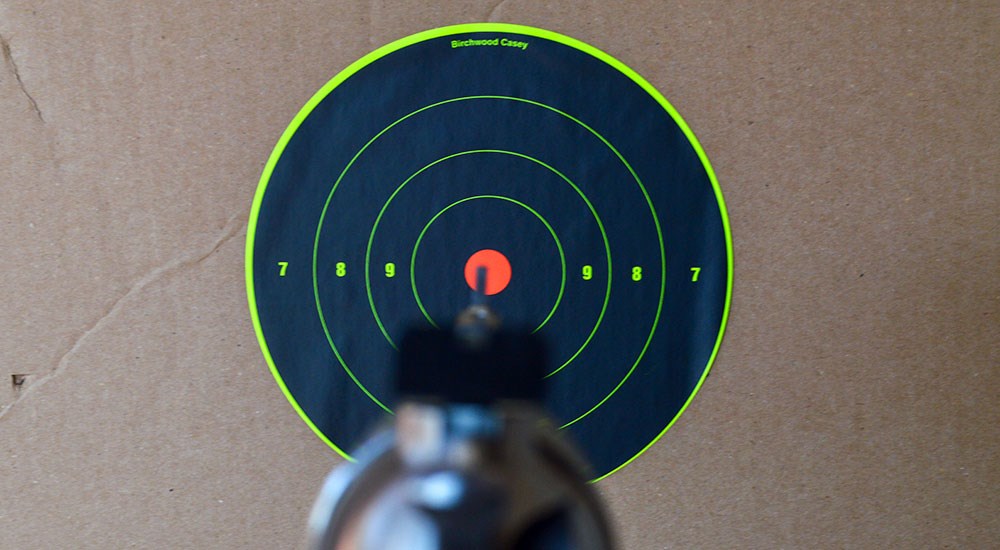
Big deal you might think, but one of the draws to an open-sighted handgun is that it is convenient to pack and carry and also quick to press into action. Problematic if you can’t actually see the sights anymore. It renders your handgun to hammer duty.
According to the American Optometric Association, a condition called presbyopia—where the aging lens in your eye becomes less flexible, making it difficult for your eyes to focus on near objects, rears its ugly head beginning in the early to mid-40s. This is, sadly, a fact of life and a natural part of the aging process. Something they fail to mention in the aging handbook. Maybe it’s a good thing, as if we knew all that was waiting for us, some might opt out! On the bright side, this vision degeneration usually stops by the time you hit 60 years of age.
It usually begins to gradually materialize when you start having to hold reading materials farther away in order to read them. Your favorite monthly hunting publication’s articles might appear blurry, particularly if the light isn’t very good. These are all signs of the onset of presbyopia.
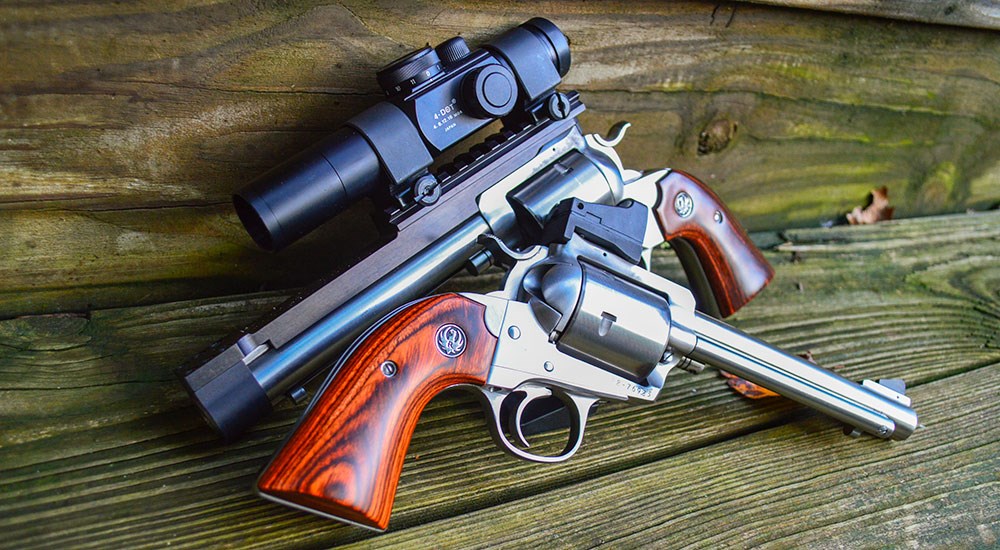 Red dots can truly give someone with aging eyesight a second lease on handgun hunting. They essentially come in two flavors: tube type and reflexive.
Red dots can truly give someone with aging eyesight a second lease on handgun hunting. They essentially come in two flavors: tube type and reflexive.
If you do wear prescription glasses or contact lenses, this condition can be addressed with bifocals or multifocal contact lenses. Monovision contacts are also an option. This is where one eye is fitted with a contact lens focused on distance and the other focused up close for reading. These lenses act to “trick” your eyes to work harder together to focus on near field and distance. Even laser surgery can address this by correcting in the same manner—one eye for up-close and one for distance (Monovision LASIK). I didn’t know this going in, but it’s moot now.
If your vision is still good later in life, and you don’t need prescription glasses, presbyopia can be combatted with over-the-counter reading glasses that magnify, allowing the older pair of eyes to read the fine print. They will also make a set of open iron sights gleefully clear. The problem lies in the fact that anything beyond said sights is woefully out of focus. No bueno for hunting—or even target shooting for that matter.
What Are My Options?
Years ago I was turned onto red dot-type sights by a friend who was, you guessed it, eyesight challenged. Ultradot was the go-to back then and to this day they build a range of red-dot sights for every application imaginable. What set them apart from other manufacturers’ offerings was their imperviousness to heavy recoil—the lifetime warranty didn’t hurt, nor did the asking price. Fast forward to today, and besides Ultradot, there are quite a few really good red-dot sights available for nearly any circumstances, to include Holosun, Burris, TruGlo and Trijicon to name but a few.
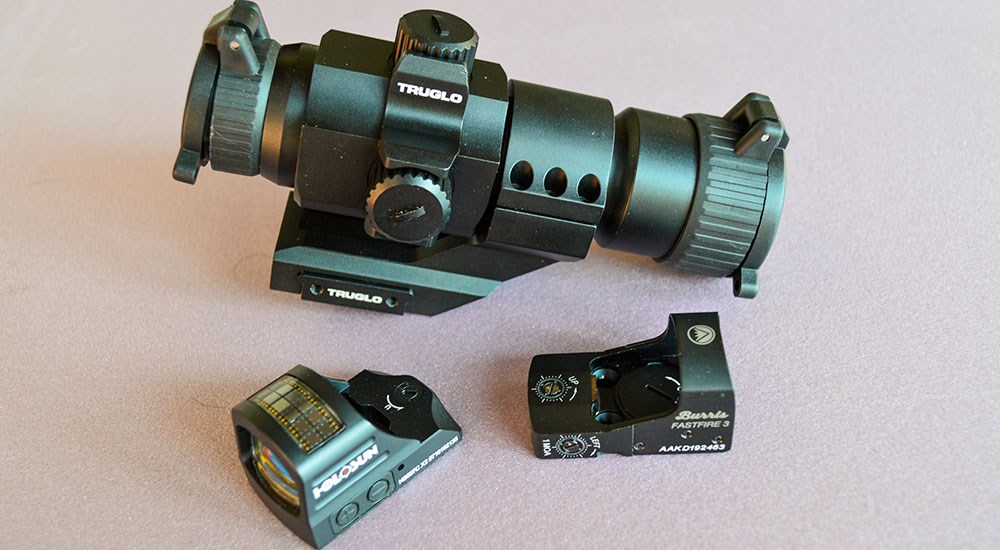 Three contemporary red dot sights include, clockwise from top: the Truglo Ignite 30mm, Burris FastFire 3 and the Holosun HS507C X2.
Three contemporary red dot sights include, clockwise from top: the Truglo Ignite 30mm, Burris FastFire 3 and the Holosun HS507C X2.
One thing about red dots that I find so attractive is the fact that they are really fast to acquire, allowing for rapid follow-up shots even on running game. Keep in mind, these optics provide no magnification. What they do offer is a lighted dot that you place on your intended target then let lead fly. It’s that simple. It’s been a lifesaver for me, but not so much for the animals I’ve hunted. They even shine in low light where picking up the crosshairs of a scope (unless it has a lighted reticle) or aligning open sights may be difficult.
The one oft-cited criticism is relying on batteries that can fail. This is a truth that cannot be denied, but over a dozen years pursuing game with a red dot on a revolver from Virginia to South Africa and everything in between, I have never had a battery fail in the field (knock on wood). Of course I always carry spares and if it’s an important hunt (aren’t they all?), you simply put in a fresh battery before heading out to the field. The peace of mind is worth its weight in venison.
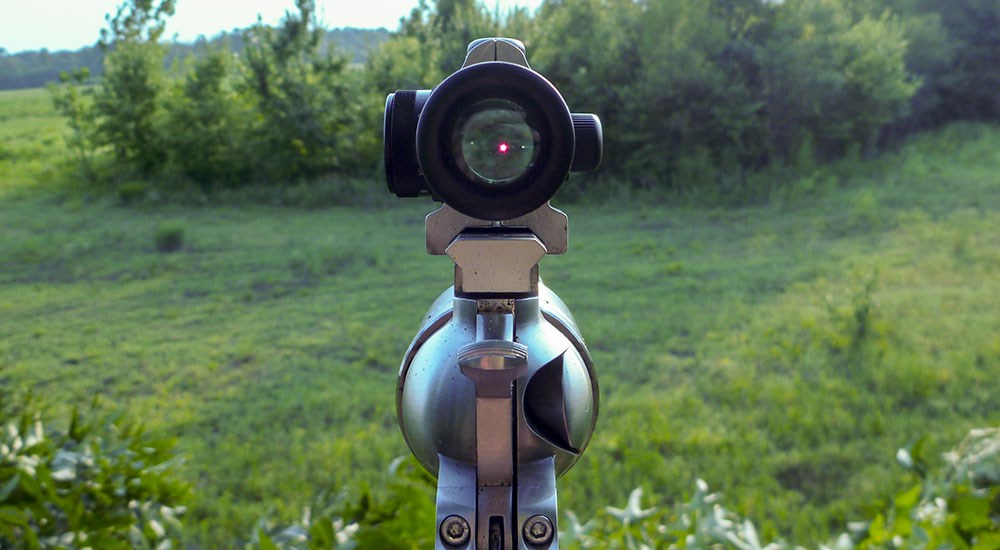 This is what you see while peering through a red-dot sight. Put the dot on your intended target’s critical body part and squeeze the trigger.
This is what you see while peering through a red-dot sight. Put the dot on your intended target’s critical body part and squeeze the trigger.
Rifles are also great candidates for red-dot sights for all of the aforementioned reasons. Rifles, however, tend to be easier on optics than hard-kicking handguns—an added benefit. A red dot on short lever actions makes for a great heavy brush gun. I know a number of North Carolina bear hunters who use lever guns for their speed and ease of use in the thick stuff. Adding a red dot enhances your ability to shoot in the low light of heavy brush.
The other obvious option is a scope. In the case of a scope on a handgun, I prefer a fixed low-power scope over a variable unit. Variables tend to be larger, more complex and as such offer more to break. (That’s not saying there aren’t tough variables out there as there are.) Another reason for a low-powered fixed unit is that with the long eye relief necessary to run one on a handgun, the lower-powered units are much easier to acquire quickly. You can also turn down the power on a variable, but this is adding a step to a situation where time may be limited. For me scopes are a mixed bag. I know some very accomplished handgun hunters who regularly and successfully poke animals out to ranges I am simply not comfortable with. In my case, the essence of handgun hunting is the up-close-and-personal nature of the endeavor. However, under certain circumstances I use scopes by Burris, Leupold and Bushnell.
I don’t need to qualify why using a scope on a rifle is a good idea, particularly at longer ranges. Anything that can increase your accuracy and thereby your lethality is a welcome piece of equipment. This is a no-brainer as far as I am concerned. Also, the significant magnification available to many variable-powered scopes allows for the hunter to assess the quality of a trophy before making the commitment to kill the animal. I know, a binocular provides the hunter with this service as well, but using the scope on your rifle eliminates an extra step you may not have before the trophy of a lifetime disappears into the sunset. Not saying you shouldn’t use a good binocular, it’s just that under certain conditions, the use of a bino may be a luxury you don’t have time for.
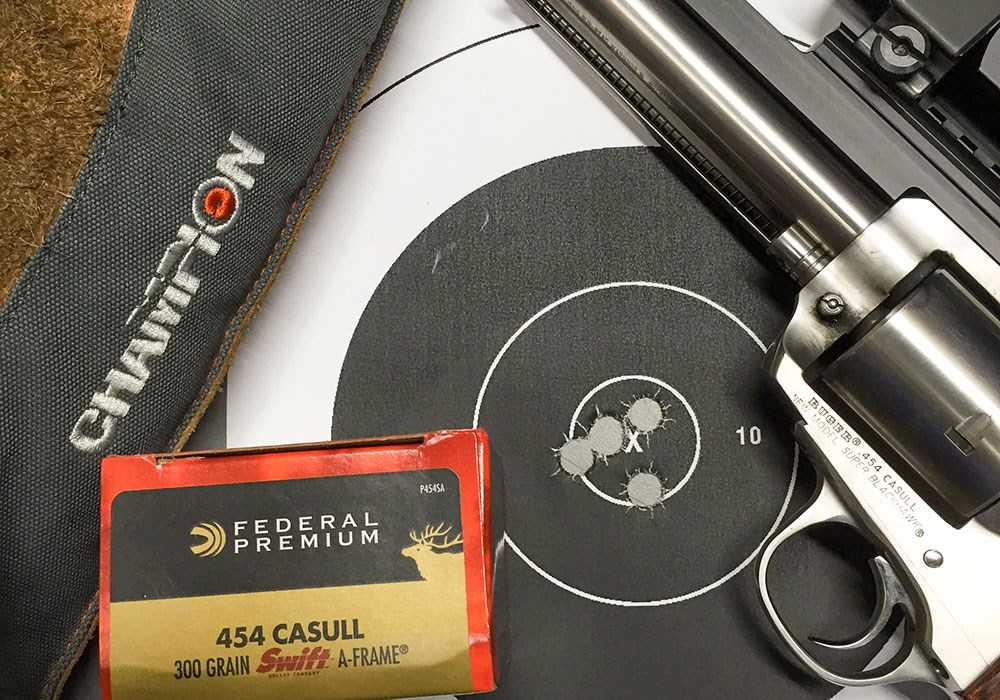 Despite the less precise nature of the red dot over a dedicated scope, with practice you can get pretty accurate with repeatability with a red dot on a revolver at reasonable distance. This five-shot group was fired at 50 yards.
Despite the less precise nature of the red dot over a dedicated scope, with practice you can get pretty accurate with repeatability with a red dot on a revolver at reasonable distance. This five-shot group was fired at 50 yards.
The aging process pretty much leaves no body function untouched. This is simply a reality one must live with. To help combat the effects of aging, it helps to stay healthy by eating well (by well, I mean eating a healthy, balanced diet) and exercising regularly to keep your weight at a reasonable level. By reasonable, I mean you should try to stay within the correct BMI (body mass index) for your height, build and age. I fought at middleweight many moons ago, and in order for me, in my mid-50s, to achieve that weight (160 pounds) I would have to lop off a few limbs. Think realistic levels and forget about what your weight was in your 20s. High school is long gone, and forever fading in the rearview mirror. It is also wise to have an annual physical and eye examination to make sure you are deteriorating at a normal pace.
Yes, it sucks getting old, but that doesn’t mean you have to stop enjoying life or hunting. It just means you have to make some adjustments and compensations for the changes taking place in your body. Youth is indeed wasted on the young, but don’t waste your time as a “mature” adult either. It ain’t over till they put you in a box, drop you in a hole and throw dirt on your face.
‘Oh Crap!’
There is one scenario where I personally will not compromise with optics and that is in the case of a back-up or “oh crap!” gun. This is my “oh $#@&!” gun. My backup hammer, so to speak. My go-to back-up in the field is a single-action BFR revolver (by Magnum Research) with a 5½-inch barrel, in .500 JRH—ostensibly a shortened .500 Smith & Wesson Magnum, with solid Dangerous Game loads by Buffalo Bore Ammunition, for uncompromising, any-angle penetration through even heavy bone. I always carry a back-up revolver, even when hunting with a revolver. Call me paranoid.
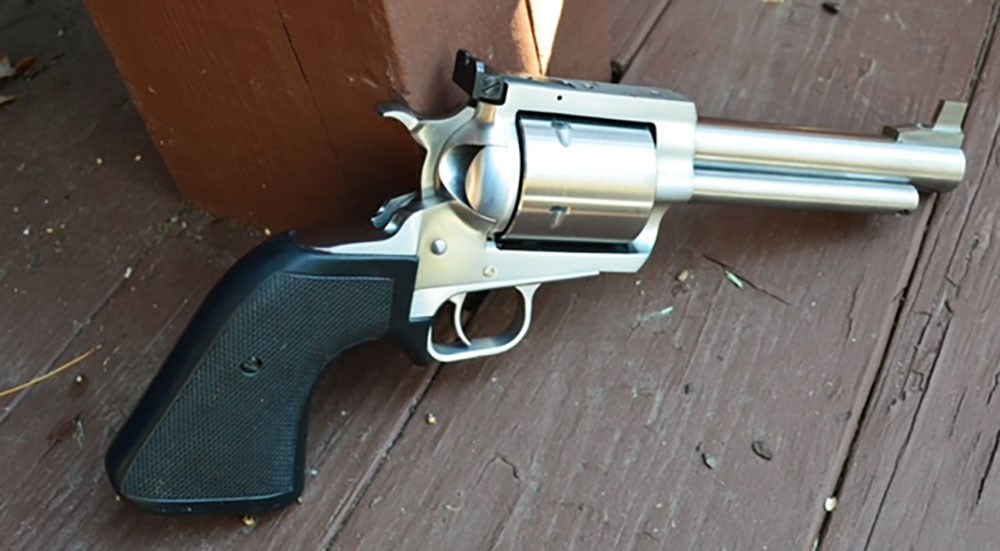
Given my challenged eyesight, careful consideration went into finding the correct components to make open sights not only possible, but viable from a terminal standpoint. Magnum Research, for the last few years, is equipping its BFR revolvers with an adjustable rear iron sight by LPA. It differs considerably from the previous Ruger-sourced adjustable rear sights in that they are physically larger, with a larger rear notch. Given the age of this particular BFR, I retrofitted it with the LPA offering. Next up, and most critically is the front sight. It is a prototype of the 2 Dogs Custom BFR sight, featuring a rather wide blade. I tested this piece years ago and while the newer versions are more refined, this sight has taken permanent residence on my revolver. I can see it clearly and it is a game-changer for me as far as open sights are concerned. I can acquire my sight picture and alignment quickly with this combination. These sights can be procured from fermincgarza.com. Trust me when I say this is the best $89 you will spend for your open-sighted BFR.















